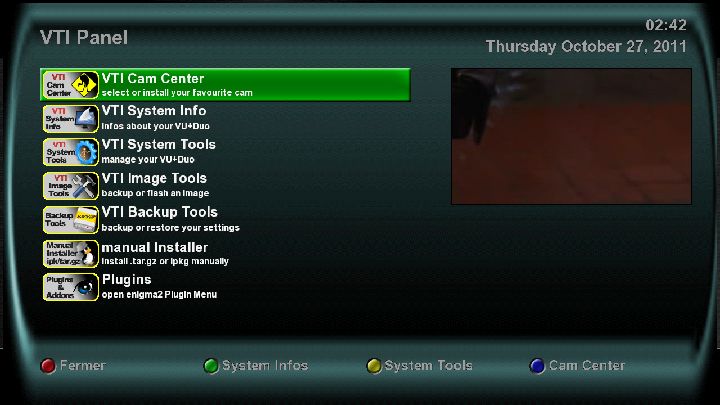
Amiko Alien 2 Mcas Plugin Download
Amiko Plugins. New plugin 2012.07.12. 1.update spcs from 2.5.63 version to 2.5.78 version 2.Oscam4spark_tools,new navigation OSD for oscam 3.update mcas to 1.0.10 version. 4.Add plugin_avatar_iptvactive.s for webtv update new list from webtv server. Please login to see this link.
Satellites around the world and including New Zealand are now using a larger range of frequencies. Skin winamp keren 3d art. The standard Ku LNBs of any brand used in New Zealand are not capable of receiving this full range of frequencies. An example of this is Intelsat 18 at 180.0 We have a TP 11155 Horizontal beamed to the South Pacific. A standard LNB has a range usually of 11.70GHz – 12.75GHz and I see plenty advertised have an even smaller range, so the 11555MHz (11.55GHz) TP would be well outside the operating range. A Universal LNB has an operating range which covers the whole frequency range from 10700 MHz to 12750 MHz. This is achieved by having two Local Oscillator frequencies, a 22Khz signal is used to change between the two, this is supplied by the satellite receiver.
For a standard LNB in New Zealand we have two common LNB L.O. Settings of 10750 and 11300. A Universal LNB uses 9750 and 10600 to achieve the two ranges of 0 and 11700 -12750. Within the last twelve months we have been fortunate enough to have two great international brands introduce a PLL (Phase Locked Loop) Universal LNB at an affordable price for the home satellite consumer, in the enthusiast/DIY market PLL is superior to DRO in every aspect.
Prior to this introduction practically all LNBs used on home satelite dishes were DRO. With people now reading about how good PLL LNBs are they changing to them but getting confused with the Universal settings. They are a perfect LNB for our regular free to air channels with the benefit of an extra frequency range, and come with superior benefits like greater stability and less rain fade, but must have the correct setting entered into the satellite receiver or signal will be ZERO!
In a nutshell, be sure of what kind of LNB you are using, how it works, and what the LNB frequency is. Make sure the programmed frequency and settings in your STB match. Firstly what do DRO and PLL stand for? Terms perhaps we take for granted without understanding what the real differences are between “DRO” and “PLL” LNBFs. DRO stands for Dielectric Resonator Oscillator PLL stands for Phased Locked Loop. In simple terms, Phase lock loop or “PLL” LNBF’s are more stable than DROs, because they use a more stable internal reference source by utilising crystal oscillators. Up to now, all domestic LNBFs used for satellite TV reception use dielectric resonator stabilized local oscillators.